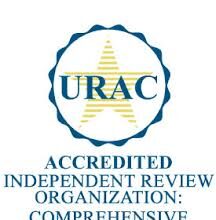This is the transcript of my podcast interview with Dr. Harvey Kaufman of Quest Diagnostics.
This is the transcript of my podcast interview with Dr. Harvey Kaufman of Quest Diagnostics.
Williams: This is David E. Williams, co-founder of MedPharma Partners and author of the Health Business blog. I’m speaking today with Dr. Harvey Kaufman. He’s a Medical Director from Quest Diagnostics and he’s also co-author of a recent article about the value of laboratory tests and employer sponsored health risk assessments that was published in the journal PLoS ONE. Dr. Kaufman, thanks for being with me today.
Kaufman: Thank you.
Williams: What was the motivation for conducting this study in the first place?
Kaufman: Quest Diagnostics is a leading provider of workplace wellness programs to employers across the country. Employers are struggling to manage population health as a business imperative. We were asked repeatedly about the documented value of employer sponsored laboratory based wellness programs, and there’s no existing literature evaluating this benefit, especially across employers. We had the unique opportunity to close this gap and provide key observations that answer this question.
Williams: There were three conditions chosen. Why those three in particular?
Kaufman: We focused on the three common chronic conditions for which there is clear evidence that early detection and medical management can change their course by flowing or halting the disease progression. High cholesterol dyslipodemia is present in more than 1 and 3 adults, diabetes affects more than 26 million Americans, and there are an additional 79 million Americans with pre-diabetes.
The widespread recognition of chronic kidney disease is just emerging, but that too affects 26 million Americans. The most important risk factors for chronic kidney disease are diabetes, hypertension, obesity and cardiovascular disease. Health risk questionnaires can’t detect these common medical conditions. Only laboratory tests can. Also key is that the three medical conditions are silent conditions at the early stages, when intervention is most likely to change the course of the disease.
Williams: What kind of results did you see, and was there anything that surprised you?
Kaufman: The study evaluated 52,270 employees, spouses and domestic partners of working ages: 20 to 64, for first-time participants in their employer’s laboratory based wellness program. The resulting data showed that one in three participants, or 36% had one or more newly identified risk for these diseases. Fifty-nine percent of those with high cholesterol were newly identified, 28% of those with diabetes were newly identified, and 89% of those with chronic kidney disease were newly identified. Surprisingly, nearly 1 in 4 participants, even in the youngest age group (20-29), had a newly identified health risk. Participants’ level of education didn’t have any impact on the results and there was no significant difference between the disease risk between male and female participants. The majority of these participants had health insurance. This shows that health care access alone doesn’t guarantee detection of risk factors of these common health conditions, since many adults don’t seek preventative care in the absence of symptoms.
Williams: I want to ask about use of the term, “health risk.” Are you referring to condition identified through a laboratory test, that’s subject to a confirmed diagnosis? When you say “health risk” I think you mean a pretty strong likelihood that somebody has one of these conditions, not just that they’re sort of “at risk” in a general sense. Is that correct?
Kaufman: Right. The diagnosis of high cholesterol, diabetes and chronic kidney disease depends on laboratory tests, but also depends on an evaluation by a doctor to rule out other causes. The typical follow-up is a medical assessment and repeating the initial lab tests.
Williams: It’s interesting that you mention that these are people with to access to insurance. You’re doing this with employers, who presumably not only offer reasonable health insurance, but who are also investing in wellness programs. So as you say, it’s not a question of access to insurance. Is it surprising that folks who have insurance don’t have a better sense of where they stand with risk factors or with diagnosis? Or is that a function of how people access the health care system, or what physicians do when those patients visit?
Kaufman: Yes, I did expect people with health insurance to take advantage of the generous benefits that are largely supported by their employers. Our study really underscores that the issue isn’t access or quality of care, it’s that people aren’t going to see their physicians until they have serious problems. Employer sponsored laboratory based wellness programs fill this gap. They identify people who should be more engaged with their medical care. These programs complement physician care by driving awareness and driving people to seek medical professionals who can help them get on the right track.
Williams: One of the things that struck me in reading the article was that you’re testing people that are younger than some of the usual thresholds for when people are tested for cholesterol or kidney disease or diabetes. Yet a fair number of problems were being identified in that younger cohort. This probably goes beyond what the article was addressing, but is it reasonable to explore whether some of those thresholds should be lowered, and is that one of the factors that’s at play here?
Kaufman: Yes, unfortunately Americans as a group have become increasingly unhealthy. That’s because we’re eating unhealthy foods, we’re eating too much of those foods, and we’re getting less physical activity and exercise than we should. Combine all that together, and you end up with a large percentage of people including those in their 20’s who are now at risk for heart disease, diabetes and chronic kidney disease. I think it was in November that the National Institutes of Health came out with recommendations supported by the American Academy of Pediatrics, to test children as young as 8 for high cholesterol. So we’re seeing what used to be a disease in older people is now in younger people and unfortunately now in adolescents and children.
Williams: I know with some testing, maybe more on the screening side, there is a controversy about whether to do the testing and how much to do it. There are concerns about false positives, for example, leading to more invasive tests, or to treatments that could themselves be harmful. For these three conditions that you are testing for, are there concerns like that?
Kaufman: Yes, we’re always concerned about wanting to identify the right people, and not identify the wrong people. Employee sponsored laboratory based health risk assessments involve common laboratory tests that are relatively inexpensive and the conditions fall on to the right side, here. People who have these risks that are newly identified should see their physician, take that history, perform the physical exam and typically repeat the same test to confirm the initial result before they make a diagnosis. The tests are common, they’re relatively inexpensive, but by themselves; don’t lead to more expensive tests. The tests themselves are designed to minimize false positives for people who may think that they’re healthy and think that they’re invincible.
These diseases are hidden inside people, you can’t see them. If they’re not identified early, and identified late, possibly it’s sudden death, a significant illness and cost, so it’s important to identify them early even when the finding is not confirmed. The individual may be heading in the wrong direction, such as having pre-diabetes. Through changes in lifestyle, by losing some weight, and becoming more physically active they can delay or avert the development of diabetes. In the end, knowledge is power when people have access to their lab results and understand them; they’re more likely to ask the right questions and make better decisions and receive better care. I don’t think there’s any downside there.
Williams: What reaction have you already had, or would you expect to these findings from providers like physicians or commercial health plans or employers or others?
Kaufman: Every entity you mention has a stake in improved population health, because we all must reduce the projected costs to both the public and private health plans. Our findings suggest that employer sponsored laboratory based wellness programs can be important keys in the early detection of these silent, common medical conditions. Doctors love it. They love the one page summary of the laboratory results that participants bring to them. Doctors love that they’re practicing medicine and making a difference in the lives of these patients. Participants keep telling us how this program has saved them, their spouse, and their domestic partners in terms of early identifications of cancers, hypertension and the three conditions that are the subject of the study.
For employers, it’s all about establishing a culture of health that can lead to healthier and more productive employees and lower their health care costs.
Williams: I appreciate that you’ve published this article in PLoS ONE, which is a prestigious peer reviewed journal. It’s also an open access journal, which means rather than my having to have a subscription, or pay $25.00 or so for the article, I can actually read it. I’ll be able to link to it from this blog post, and everybody can see the details. I’m wondering, was it a conscious decision to seek out that particular publication, or an open access journal in general?
Kaufman: Absolutely. PLoS ONE is now recognized as one of the most respected peer reviewed journals. We were looking for the widest audience given how our message crossed across from human resource directors to physicians. In addition, PLoS ONE has quick turnaround time, so it let us get the message out more quickly compared to other leading journals. Open access journals like blogs, have become more important in terms of how we communicate. When we seek to share information, they serve to document current conversations without many of the constraints of traditional journalism, yet with the same rigor of peer review.
They provide wide access to current research and thinking, and I think that’s the upside for exchanging current ideas and learning.
Williams: I’ve been speaking today with Dr. Harvey Kaufman, Medical Director from Quest Diagnostics about the findings from a new study about the value of laboratory tests in employer sponsored health risk assessments for identifying health conditions. Dr. Kaufman, thank you very much for your time today.
Kaufman: Thank you, David.







